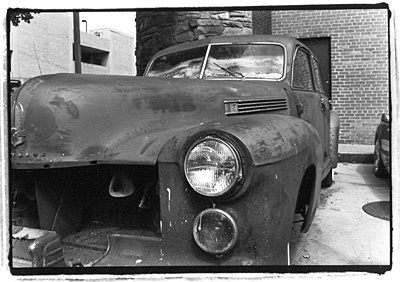All Nonfiction
- Bullying
- Books
- Academic
- Author Interviews
- Celebrity interviews
- College Articles
- College Essays
- Educator of the Year
- Heroes
- Interviews
- Memoir
- Personal Experience
- Sports
- Travel & Culture
All Opinions
- Bullying
- Current Events / Politics
- Discrimination
- Drugs / Alcohol / Smoking
- Entertainment / Celebrities
- Environment
- Love / Relationships
- Movies / Music / TV
- Pop Culture / Trends
- School / College
- Social Issues / Civics
- Spirituality / Religion
- Sports / Hobbies
All Hot Topics
- Bullying
- Community Service
- Environment
- Health
- Letters to the Editor
- Pride & Prejudice
- What Matters
- Back
Summer Guide
- Program Links
- Program Reviews
- Back
College Guide
- College Links
- College Reviews
- College Essays
- College Articles
- Back
Foamy Vehicles for a Safer Tomorrow MAG
Car crashes are among the leading causes of injury in modern society. Whether due to drunk driving, reckless speeding, or just a simple mistake, terrible accidents occur every few moments. These wrecks can result in death or serious physical harm, as well as financial costs, not to mention annoyances like time and effort spent on paperwork, insurance, and repairs. Although modern technology has improved the safety of vehicles immensely, there is still room for improvement. No matter how high-tech and safe our vehicles become, the fact that flawed humans operate them ensures inevitable mistakes. To address this innate safety flaw in transportation, drastic changes need to be made to the design of vehicles.
People can be real idiots. What could be more stupid than allowing tons of metal to fly across our roads? Seriously – think about it. The average car is essentially 4,000 pounds of deadly, pliable steel traveling up to 75 miles per hour around populated areas, and we don't even blink an eye? This is equivalent to a momentum of almost 61,000 kg × m/s upon impact! Maybe I should just say it would really hurt to get hit by a car. It's no wonder we have widespread death and injury thanks to automobiles.
No matter how carefully we drive, there is always deadly potential lurking behind the metal grills of our vehicles. This is a recipe for disaster! We have grown so used to the idea that we can lessen the consequences of wrecks by simply adding more technological sophistication that we have blinded ourselves to the simplest solution: Nerf cars!
We're all familiar with the genius invention called the Nerf gun. Kids get to play war, shooting each other with harmless foam bullets for hours of heart-pounding excitement (until someone inevitably gets shot in the eye). Nerf makes everything from sniper rifles and mounted machine guns to footballs and bats. The concept of replacing dangerous materials with Nerf foam has revolutionized violent and destructive activities. Swords, guns, sports equipment, and many other objects have come under the glorious influence of Nerf, so why stop at children's toys? Why not bring this revolutionary idea to transportation?
Nerf test subjects (those innocent and unknowing children) have already embraced the benefits and possibilities of foam substitution, but adults need to be persuaded. Financially, Nerf foam is cheaper than metal and easier to mold into endlessly useful forms. It's less expensive than steel or aluminum and could be used in current vehicle manufacturing without redesigning most of the equipment. A tweak here and there and automobile factories would be ready to build the safest vehicles ever.
Just imagine the possibilities. Instead of decimated vehicles and maimed drivers, we would have harmless – even humorous – collisions. Cars would bounce off each other like bumper cars at an amusement park. Collisions that once would have been fatal would result in mere bumps and bruises. Another benefit to Nerf cars is that the foam is virtually indestructible, so collisions between Nerf vehicles would result in minimal or no damage. We would, though, have to discourage crashing on purpose just because it's fun. Maybe pass a law that would penalize “wrecking for the sake of amusement.”
The financial benefits are also noteworthy. Since injuries and repairs from collisions would be nearly nonexistent, insurance rates would drop significantly (hmm, insurance companies might not like this … oh well). Because cars would be lighter, they would also be more fuel-efficient and save drivers a mint at the pump. And for those eco-friendly tree-huggers out there, we could have electric Nerf cars.
Granted, Nerf material is neon orange, so our cars would be super bright, but hey, I guess that would make them all the easier to see and avoid. Clearly, the benefits of Nerf cars far surpass those of their metal counterparts.
Childhood innocence and carefree spirit could be prolonged into adulthood with the invention and use of Nerf cars. I can just imagine the glee on drivers' faces as they fly down the road with no fear of injury or vehicle damage. Nerf cars have the potential to create a safer, happier, and yes, even “brighter” tomorrow.

Similar Articles
JOIN THE DISCUSSION
This article has 0 comments.
